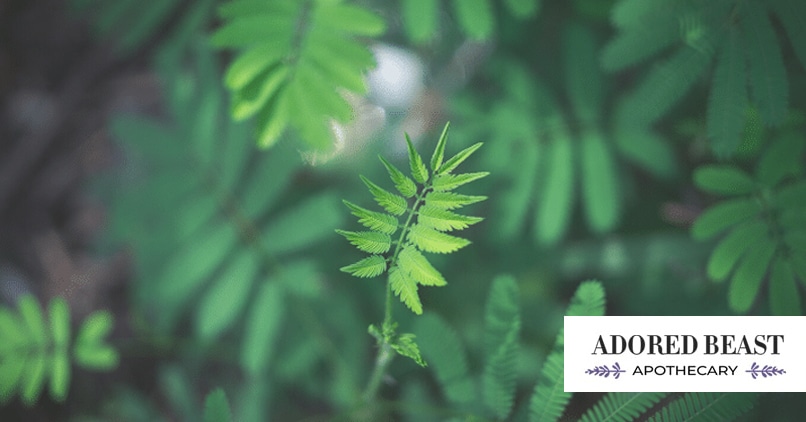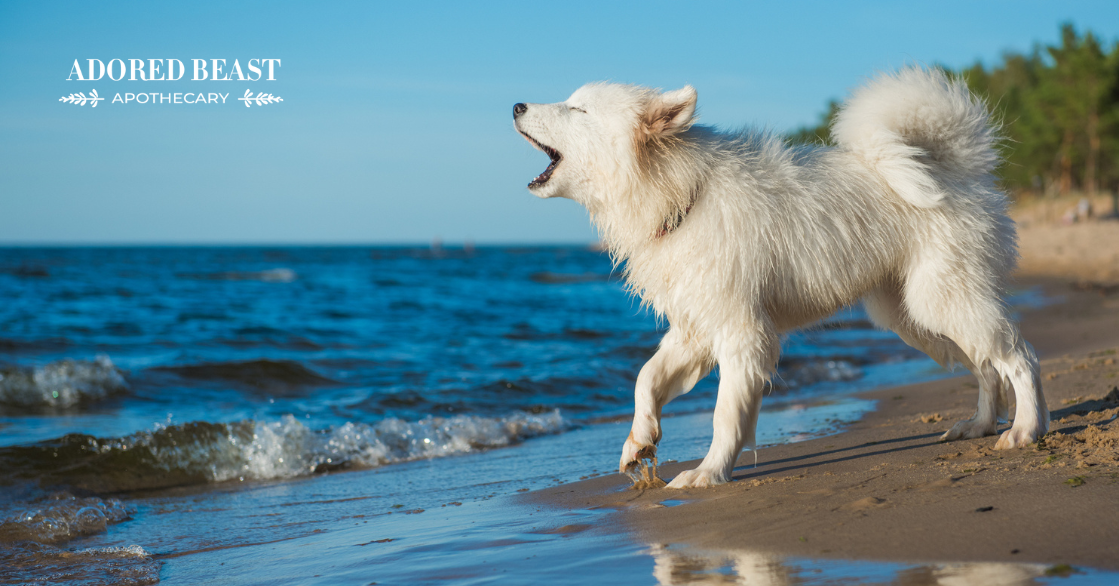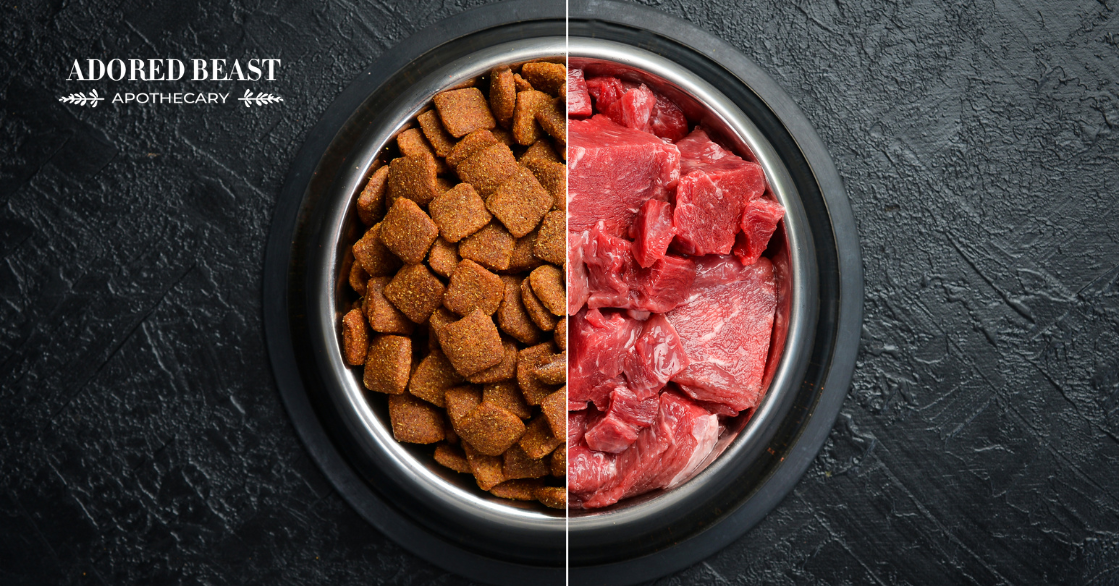I want you to take a moment and just think about nature. Think about a forest and how it breathes. How all of the elements play a part in maintaining ecological balance to help each other. The trees, the soil, the bugs, the animals. It really is a wondrous thing how these beings work together in perfect harmony.
A large part of natural medicine is truly trusting in the empirical and anecdotal evidence of the physiological world of energy that’s within the plants, animals and oceans that we all share our lives with. In 1994, when I recommended raw food for my patients or titer testing instead of vaccines, people – including the veterinary association – thought I’d flown in on a broom. Thankfully, the internet has connected us to more research and has helped create a revolution that’s empowering us and our pets.
However, I believe that the research and advancements come with a cost. As with everything good, we as a society seem to lose our balance. Has being “connected” actually caused us to become more disconnected? I worry that, in the process of making things “better,” we’ve forgotten how amazing things are in their natural state.
The Connected Disconnect
Has the scientific part of proving that nature has its place in health continued to help us? Or has it made us lose sight of a connection that can’t be seen by the naked eye or even under a microscope, but is physically felt through the synergetic part of connection that happens every second in our cells on a much deeper level?
I believe we’ve taken natural medicine and nutrition and “standardized” them into our Western ways. For example, we think more is better, stronger is more powerful, or that we should take what we need and discard the rest.
What if less is more, simple is smarter, and small amounts of whole synergistic nutrients are all we really need?
When it comes to herbal preparations, strongly rooted philosophies influence people’s positions in the debate on standardizing herbs. Those with a more scientific view feel the need to quantify a herb’s healing potential by measuring the concentration of the active constituent that achieves proven results. Others observe synergy and spirit working together in ways we may not fully understand, with whole plant remedies that embrace healing, often in more ways than one.
We have nutritionists steeped in science saying that based on laboratory guidelines you need precise amounts of vitamins and minerals every day to get a balanced diet. Other nutritionists with a more evolutionary or synergistic approach say that our bodies need a variety of whole food and mineral nutrients, and we can achieve balance through micronutrients in ways that are as individual as the plant itself; these are much more difficult to see and understand than controlled laboratory studies.
What if plants (including vegetables) are so much more than we think? What if they have intelligence – an intelligence that can’t be measured through standardization or by fitting them into the mathematical box of “what we need?” What if they have social skills and the ability to support each other as a group and family… and what if that innate intelligence that keeps them healthy could be passed on to us along with their nutrients?
This isn’t so hard to believe actually. Think about your vegetable garden. You plant tomatoes and basil together, not just for great tasting spaghetti sauce, but because the basil protects the tomato from pests. Corn and beans are perfect companions because beans will grow up the cornstalks, so there’s no need for a trellis. The beans repay the corn by fixing nitrogen in the soil, which is good for the corn. They work together.
A Plant’s Cry for Help
Science supports this theory that plants are actually very intelligent beings. Here are a few of my favorite examples.
Dr. Ian Baldwin of the Max Planck Institute for Chemical Ecology has proved that the wild tobacco plant’s genome has as many genes as an animal, with very sophisticated perception and response skills. Wild tobacco plants can recognize the type of enemy that’s attacking them – for example, a caterpillar, recognized by its saliva. The plant sends out a call for help by emitting a scent that attracts reptiles. It then starts to produce a sugar-like substance that gives the caterpillar an odor that attracts the reptile, who eats the caterpillar! This plant can recognize its pollinator and if it’s not a perfect match it can change its flower and the time of pollination from day to night, or attract hummingbirds instead of moths.
A plant’s cry for help is manifested through a particular scent, like the smell of fresh cut grass. That scent is the plant’s mechanism to alert other plants of trauma and to receive help. Dr. Baldwin has even shown that plants have the ability to hear. He describes this hearing as a plant’s method of “self observation.”
The Forest for the Tress
Professor Suzanne Simard, Forest Ecologist at the University of British Columbia, has shown that the forest has complicated social interconnections.
The forest floor has layers upon layers of an integrated world of fungi that have no ability to produce their own food, yet can move carbon, sugar, water and nutrients between trees, depending on the need of each tree. This is a symbiotic relationship as the fungi are then also fed. More than 90% of plant species in natural areas form a symbiotic relationship with the beneficial mycorrhizae (fungal roots).
At the center of the forest stand the mother trees. These trees are the largest and connect to all the other trees through the fungal network. When researchers injected radioactive carbon-14 into the mother tree then tracked how it was dispersed, they were astounded to find that the mother trees took very little for themselves and gave more to the smaller trees in the forest. Because the forest doesn’t have much light, the mother tree looks after the entire forest through the fungal network. Suzanne’s research shows that if the mother tree is cut down the survival rate of the younger members of the forest is substantially diminished.
There are many more examples of innate intelligence, but these two are definitely worth mentioning:
- Dr Susan Dudley at McMaster University has demonstrated that plants recognize their relatives and will share their nutrients and not compete with them for sunlight.
- Dr. Consuelo De Moraes, Professor of Entomology at Penn State University, has shown that plants can actually make choices and even their own decisions!
Synergy Among Plants
Authentically schooled herbology experts have always known the importance of nature’s synergy with wild herbs (called wildcrafted) and companion planting (planting together specific plants that are known to grow with each other in nature). This synergy helps plants fight off parasites, take up nutrients, share, build and cultivate soil flora.
That said, there’s also an important element of give and take in each and every relationship. Each plant also contributes social or emotional energy to its community. For example, chamomile is known to increase the essential oil component of almost any plant. My grandmother used to say it was because chamomile “sings to the other plants to calm their nerves and help their juices flow.” Who knows? What we do know is that the emotional and physical properties of chamomile bring calming and pain relief. At our company we plant and harvest with the sea tide and gravitational pull of the moon. Is it such a stretch to think that plants share the same reactions as we do – and so much more?
What This Means For Your Animals and Entire Family
I’m sure by now you’re asking what this has to do with your dog. The confusion, debate and discussion around nutrition and supplementation can be very stressful and I personally don’t believe it should be. My philosophy with my own furry kids, my patients, myself, my family and friends goes like this:
If you’re dealing with a life threatening or incurable disease, it may be necessary to use a nutraceutical (a natural substance that has been modified to produce a specific health benefit). Nutraceuticals can be life saving and they can restore quality of life. Yet I always give the whole herb so that its complementary energy can help the body heal more deeply.
When it comes to daily nutrition we need to ask ourselves whether we’re spiraling out of control by over-analyzing and over-supplementing our dogs, cats, horses or ourselves. Is it really a good idea to be filling them full of altered, genetically modified, manipulated, chemically extracted products that are devoid of a plant’s energy and intelligence, making them a fraction of what they would be in nature. Are we depriving our beloved beasts of all of the benefits by ignoring the synergy that exists?
The concept and research of symbiotic plant communication has far reaching implications, not only for forestry but for agriculture, including medicinal herbs.
This revelation may change the way the world approaches harvesting forests, by leaving the mother trees intact to foster regrowth. In agriculture, undisturbed mycorrhizae systems improve the plant’s ability to resist pathogens, absorb water and nutrients from the soil and maintain soil biochemistry. In medicinal herbs, companion planting enhances medicinal benefits. This brings into question the common practices that disturb these underground fungal networks, such as plowing, planting crops of only one species, etc.
For me it goes even further. Do we continue to live with only our science-based brains and refuse to acknowledge that our planet has been designed in such a way as to encourage perfection? Its balance didn’t come from daily precise numbers. This comes from the ebbs and flows of the seasons, the moon, the sea, its bounty and its natural disasters. It wasn’t meant to be fractioned and dissected. It flourished through its imperfections instead of just surviving in perfection.
I will leave you with this to contemplate: Have Big Pharma’s modern “advancements” (“fortifying,” “standardizing,” “researching and approving”) disconnected us from nature’s own ability to nurture and heal? How do we discern nature versus natural? And are our we all missing out as a result?












